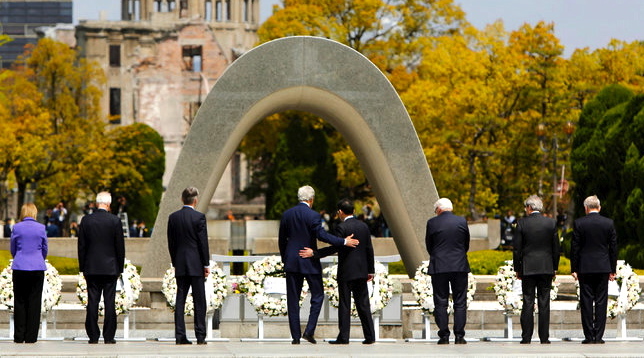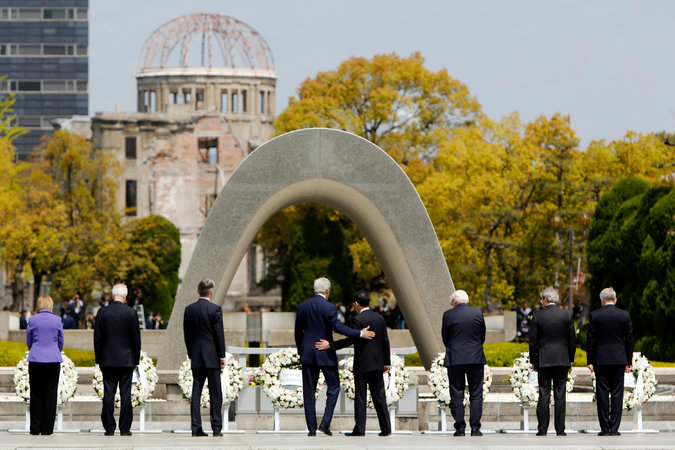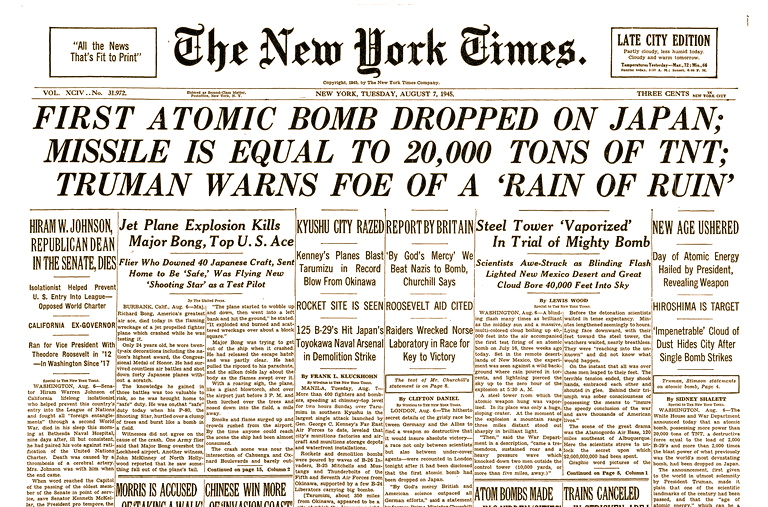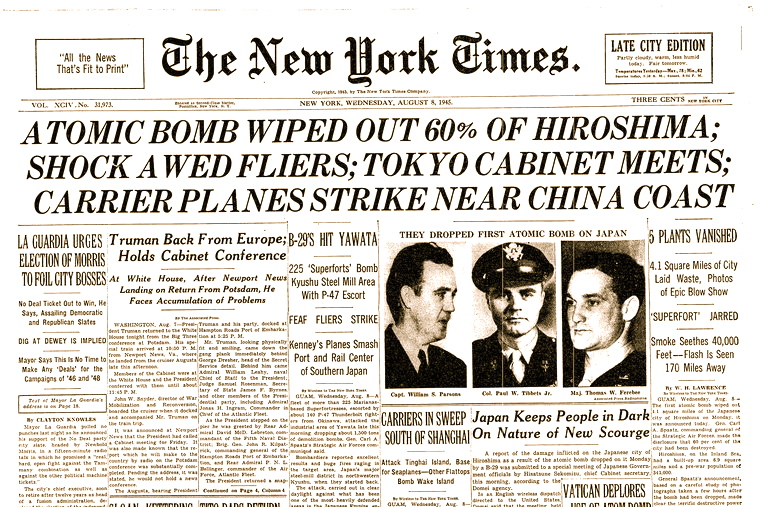Kerry Visits Hiroshima Memorial

Kerry visits Japan’s Hiroshima Memorial
U.S. Secretary of State John Kerry has paid a historic visit to the Hiroshima memorial located on the site where American planes launched the world’s first nuclear attack. The blast and the radiation that resulted killed some 140,000 people.
Kerry Visits Hiroshima Memorial and Underlines U.S.-Japan Alliance
 Secretary of State John Kerry, center left, with Japan’s foreign minister, Fumio Kishida, at Peace Memorial Park in Hiroshima on Monday. Credit Pool photo by Jonathan Ernst
Secretary of State John Kerry, center left, with Japan’s foreign minister, Fumio Kishida, at Peace Memorial Park in Hiroshima on Monday. Credit Pool photo by Jonathan Ernst
HIROSHIMA, Japan — Secretary of State John Kerry attended a memorial ceremony in Hiroshima on Monday for victims of the American atomic bombing 71 years ago, becoming the highest-ranking United States administration official to visit the site of one of the most destructive acts of World War II.
The visit is likely to intensify speculation about whether President Obama will go to Hiroshima during a planned trip to Japan next month. Mr. Obama would be the first sitting American president to visit the city, a decision that would resonate deeply in Japan but would be controversial at home.
“Everyone should visit Hiroshima, and everyone means everyone,” Mr. Kerry said at a news conference on Monday in response to a question about whether Mr. Obama would go. He said that the president had been invited by Japanese officials and that he would like to visit someday, but Mr. Kerry added: “Whether or not he can come as president, I don’t know.”
Mr. Kerry spoke after he and other leading diplomats from the Group of 7 industrialized countries toured Hiroshima’s atomic bomb museum, laid flowers at a cenotaph in its Peace Memorial Park and examined the former exhibition hall that stood directly under the atomic blast and has been preserved as a skeletal monument. He called the experience “stunning” and “gut-wrenching.”
Mr. Kerry and the other officials were in the city for talks ahead of the annual Group of 7 summit meeting next month, to be hosted by Japan.
The question of how to acknowledge the nuclear attack on Hiroshima, and another on the city of Nagasaki three days later, has long troubled American diplomats. The bombings ultimately killed more than 200,000 people, most of them civilians, in a country that after the war was transformed from an enemy of the United States into one of its closest allies.
But a majority of Americans have long believed that the bombings were necessary to force Japan’s surrender and to spare American lives. Any hint that the United States was apologizing could prove highly damaging politically. For decades, American ambassadors to Japan avoided the somber annual ceremonies commemorating the bombings each August.
Japan has never demanded that the United States apologize for the bombings, and Mr. Kerry did not do so on Monday. Still, the Japanese foreign minister, Fumio Kishida, who is from Hiroshima, called the visit by Mr. Kerry and other Group of 7 officials “a historic day.”
“I want to deliver a strong and clear message of peace from Hiroshima to the world,” Mr. Kishida said.
Mr. Kerry’s participation in the ceremony threatened to overshadow the two-day Group of 7 meeting, attended by foreign ministers from Britain, Canada, France, Germany and Italy as well as the United States and Japan. They discussed terrorism, the refugee crisis in Europe, North Korea’s nuclear program and maritime security threats in Asia, among other issues.
Without naming China, the ministers criticized Beijing’s assertive claims in the East and South China Seas, condemning what they called “intimidating, coercive or provocative unilateral actions that could alter the status quo and increase tensions.”
Similar language has appeared in the communiqués issued by Western officials before, but it has done little to stop China from moves like building artificial islands in disputed waters and dispatching its coast guard into areas claimed by its neighbors.
Plans for Mr. Kerry’s visit to Hiroshima had already caused speculation that Mr. Obama could make history next month by going to the city during the summit meeting in Ise-Shima, about 250 miles to the east.
http://www.nytimes.com/2016/04/12/world/asia/john-kerry-hiroshima-wwii-japan.html?_r=1



